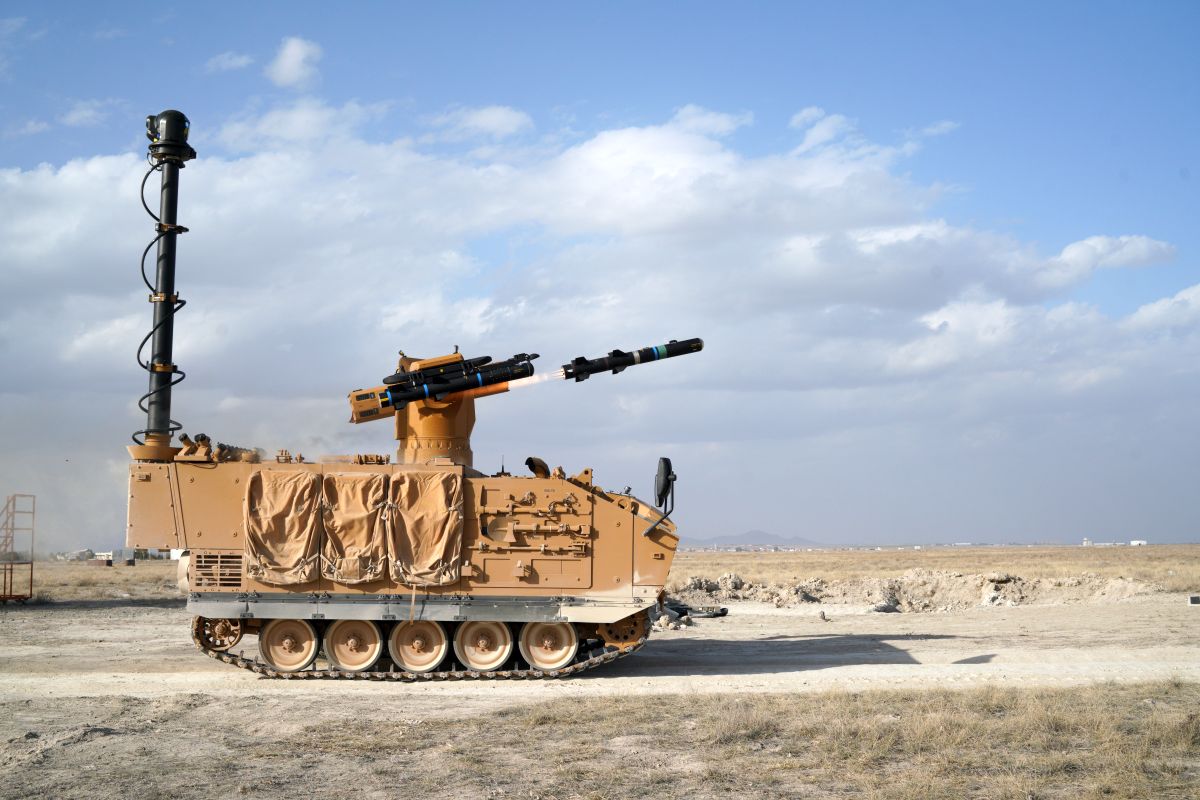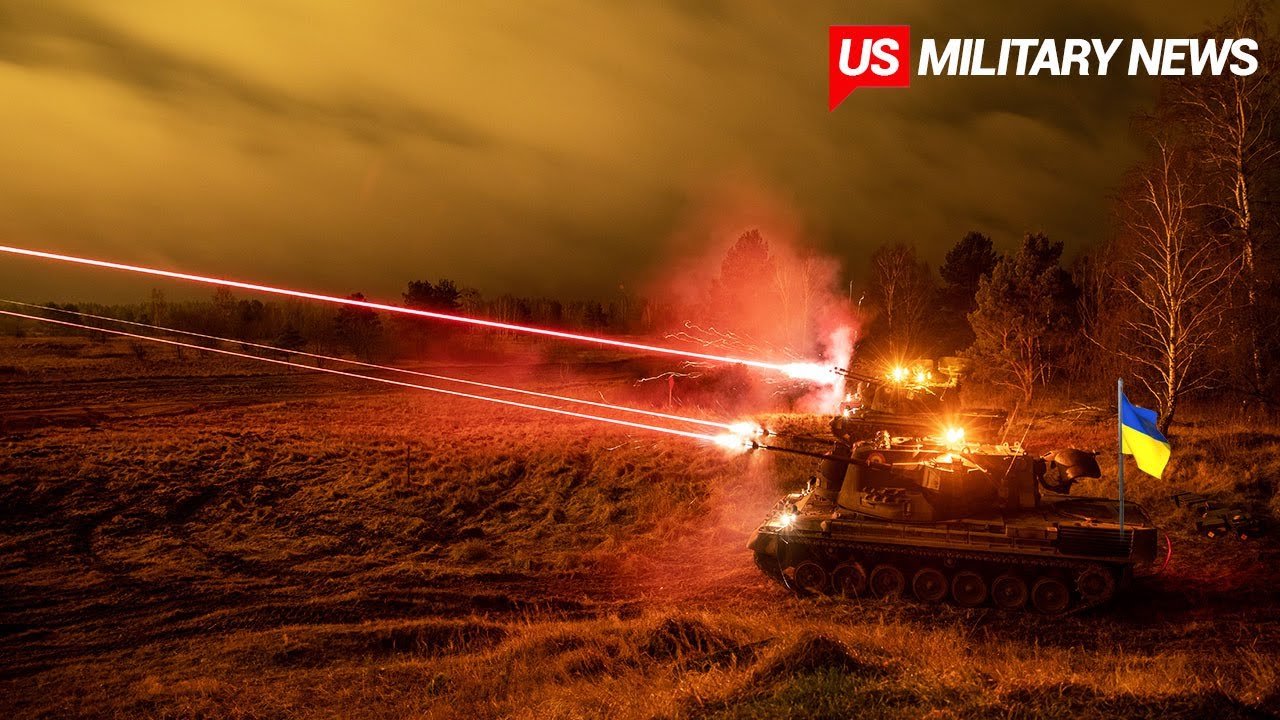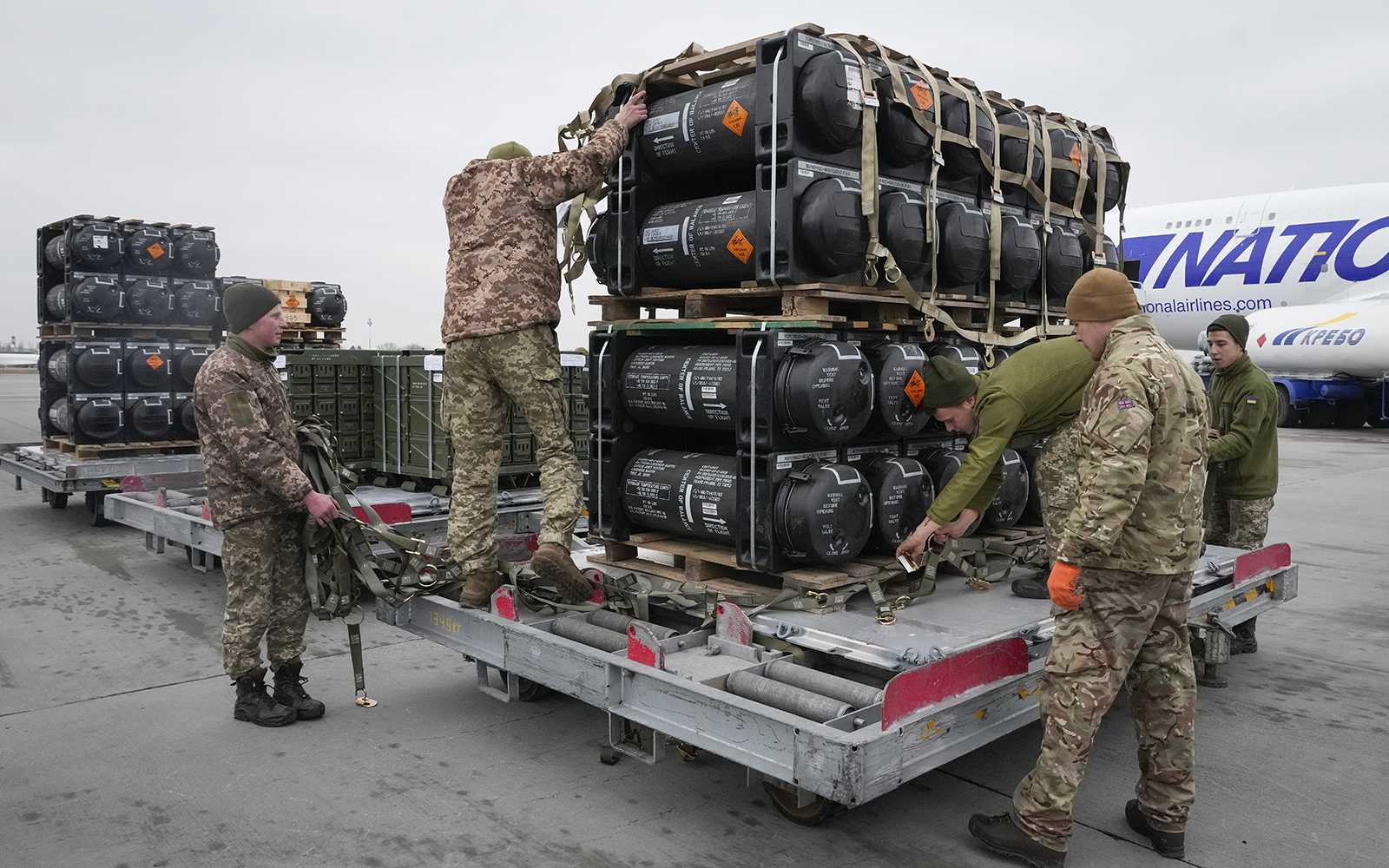Us Anti Aircraft Tank - This article requires additional information for verification. Please help improve this article by adding information from reliable sources. Unclaimed content may be challenged and removed. Find sources: "Self-propelled anti-aircraft weapon" – news · newspapers · books · scholarship · JSTOR (November 2007 ) (Learn how and how to remove this design message)
Anti-aircraft guns, also known as anti-aircraft guns (SPAAGs) or air defense systems (SPADs), are vehicles special portables can save the plane.
Us Anti Aircraft Tank

Special weapons used include machine guns, automatic rifles, sniper rifles, or rifles, and some are armed with rifles and shotguns (such as the Pantsir-S1). Applications include trucks and heavier combat vehicles such as personnel carriers and tanks, which provide additional protection against aircraft, artillery, and mortars. 'i guns for the execution of the front lines.
Video Shows First Kill By Ukraine's Anti Tank Artillery Round
Anti-aircraft guns are usually mounted on high-speed turrets, to target high-speed aircraft. Usually there are two or four hills, so the fire can be high. In addition, many anti-aircraft guns can be used in direct fire against the surface to great effect. Today, guns (mounted on the same tower) have largely replaced anti-aircraft guns, but they may return as a cheap way to fight air machines (drones).
Submachine guns have long been mounted on vehicles, and were quite common during World War I. German WWII "88" submachine gun, a German 77 mm anti-tank gun of World War I, mounted on a truck. and used in reference to British tanks.
British QF 3 inch 20 cwt mounted on trucks for use on the Western Front. The British also had their first anti-aircraft weapon, the QF 1-pound pom-pom. It was mounted on an armored truck called the Pierce-Arrow armored AA truck, which was produced in limited numbers and only entered service in 1915.
Between the two World Wars, the British developed the Birch gun, a general purpose gun on a mounted vehicle that could be kept organized with currt tanks in the field. Guns can be lifted for aircraft use.
Patriot Missile Long Range Air Defence System, Us Army
Vickers Armstrong also built the SPAAG based on the light/Dragon tank chassis, Medium, Mark IV Vickers Mk.E 6-ton, Mark IV artillery tractor, fitted with the Vickers QF-1 "Pom-Pom" 40 mm gun About 26 were sold to Siam and were seen as support guns and AA guns during the Franco-Thai war (1940-1941) along with 30 Vickers Mk.E Type B 6 ton tanks. Probably the first SPAAG to be tracked that was produced in the series. Later the British also developed a version of the Mk.VI Light Tank armed with four machine guns called the Light Tank AA Mk.I. And also a twin 15 mm model based on the Light Tank Mk.V was built.
Among the early pioneers of pre-war self-propelled guns were the Germans. During the war, they bought Sd.Kfz. 10/4 and 6/2, half-track mounted 20 mm or 37 mm AA guns (approximate). Later in the war German half-tracks were fitted with quadruple 20 mm guns.
Big guns follow big trucks, but installation requires a set of trucks to remove the necessary stable feet. One exception to this rule is the highly effective Cannone Italia da 90/53 mounted on a truck, the so-called "autocannoni da 90/53". The 90/53 was a formidable weapon, especially in the anti-tank role, but only a few hundred were produced during the armistice in 1943.

Other countries are working on motor vehicles. Beginning in 1941, the British developed the "portee" method of mounting anti-tank guns (first 2 pounds) on trucks. This is to prevent the weapon from being damaged by dragging it long distances in the rough desert, and therefore it is only one way to carry it, with the gun open for firing. However, the crew tried to fire some weapons from the vehicle for traveling on this open road, and it caused casualties.
Tamiya 1/35 Military Miniature Series No.161 Us Army Anti Aircraft
Certainly the inspiration of the Morris C9 / B (specifically "Carrier, SP, 4x4, 40 mm AA"), the Bofors 40 mm AA gun was mounted on a carriage derived from the Morris "Quad" Field Artillery Tractor truck.
The same type, based on a 3-ton lorry, was produced in the UK, Canada and Australia, and was installed together with many AA self-propelled guns in British service.
The US Army took truck-mounted Bofors 40 mm AA guns with truck-mounted units equipped with mechanical armor on the journey, first to Great Britain and then to France. The Turrets are four .50 inch (12.7 mm) machine guns, which are designed to be arranged to be connected at one time in order to show the planes of the emy at a low altitude in the management of experimental vehicles based on many soldiers and land.
The interest in mobile AA is a heavier vehicle with the size and stability needed to easily train weapons of all types. Perhaps the need, especially in the German service, for anti-aircraft vehicles to be armored for their own protection also contributed to this trd.
Self Propelled Launcher Anti Aircraft Missile System Krug Stock Image
The SPAAG armored concept was pioneered by Hungary during World War II with the production of the 40M Nimrod based on the Luftvärnskanonvagn L-62 Anti II license obtained from Sweden. Then the Germans in the "Flakpanzer" series. German WWII SPAAGs include Möbelwag, Wirbelwind, Ostwind and Kugelblitz. Other powers followed with their own designs, especially the American M16 made by mounting the M2HB Browning rifle on the M3 Half-track.
The British developed their own SPAAG throughout the war mounting a number of machine guns and light guns on various tanks and armored vehicles and in 1943, the AA Crusader tank, which was fitted to the Bofors 40 mm gun or two or three Oerlikon 20 mm. gun Although it was used during the invasion of Normandy, at that time German aircraft were occupied by the Allied air forces and were generally not needed.
Flakpanzer Gepard, combined radar, fire engine and two 35 mm guns in a new hole mounted on a Leopard vehicle.

The introduction of jet engines and doubling the speed of the aircraft reduced the effectiveness of the SPAAG against attack aircraft.
Normandy, France; 4 June 2014: Normandy, France; 4 June 2014: Vintage U.s. Army Wwii Truck Antiaircraft On Display Stock Photo, Picture And Royalty Free Image. Image 123059906
A typical SPAAG round can have a muzzle velocity on the order of 1,000 meters per second (3,300 ft/s) and may take two to three seconds to who is aiming at the highest level. An airplane flying at 1,000 kilometers per hour (620 mph) is moving at about 280 meters per second (920 ft/s). This means that the plane will travel hundreds of meters during the flight of the shell, which greatly complicates the problem of aiming to a point where it is completely impossible to use the missile system. This speed also allows the aircraft to fly quickly out of range; ev if the aircraft passes directly through the SPAAG, it will be in the firing line for 30 seconds.
SPAAG continued development in the early 1950s with better guns, Some improvements and allowed the gagemt to be made at long distances where the crossing was smaller and the four easier hope. Examples include 40 mm U.S. M42 Duster and 57 mm Soviet ZSU-57-2. However, they were both completely useless before being dismissed from service, and were given a job as ground support only. The M42 was introduced in the Vietnam War to meet the North Vietnamese air defenses, but it did not prove to be an effective precision fire weapon. The ZSU-57 found similar use in the Yugoslav Wars, where high-altitude fire was useful in mountainous terrain.
By the late 1950s, the US Army had given up on the SPAAG concept, deeming all missile-based weapons ineffective against modern aircraft. This belief is held by many powers, and the role of anti-aircraft is almost exclusively commercial. The Soviet Union remained on the outside, starting to develop the new SPAAG in 1957, which was introduced as the ZSU-23-4 in 1965. This system included research and testing of radar, fire control , and automatic guns, improved. effective against modern targets. ZSU-23 proved to be very effective when used in conjunction with SAM; presce of SAMs forcing the plane to fly low to avoid their radar, put some ZSUs.
The success of the ZSU-23 led to the revival of the SPAAG. This was also inspired by the introduction of attack helicopters in the 1970s, which could hide behind terrain and "go" for attacks in just a few seconds. ; guns are useless at high altitudes, but helicopters are often in range of guns for quick attacks. Prominent among these systems was Germany's Gepard, the first western SPAAG to offer performance equal to or better than the ZSU. This system is often copied in various parts of NATO.
Self Propelled Anti Aircraft Weapon
The development of SPAAG continues, with many modern models that often include rifles and short guns. Examples include the Soviet/Russian Tunguska-M1, which replaced the ZSU-23 in service, a new version of the Gepard, the Chinese Type 95 SPAAA, and the British Marksman turret, which can be used on many bases. Some forces, such as the US Army and the USMC have largely abandoned self-propelled guns in favor of shorter systems.
Buy anti aircraft gun, 3 inch anti aircraft gun, anti aircraft gun range, 90 mm anti aircraft gun, nerf anti aircraft gun, russian anti aircraft gun, anti aircraft gun, lego ww2 anti aircraft gun, lego anti aircraft gun, anti aircraft gun games, 20mm anti aircraft gun, bofors anti aircraft gun

0 Comments